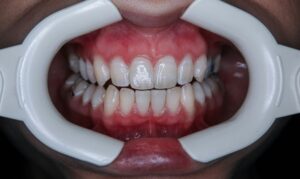Cellulite, the dimpled, lumpy appearance of skin often seen on the thighs, buttocks, and abdomen, is a common concern among women. However, what many people may not realize is that men can also develop cellulite. While cellulite is more prevalent in women due to differences in skin structure, hormones, and body fat distribution, men are not immune to it. In fact, many men experience cellulite, though it may manifest differently than it does in women.
This article will explore whether men can have cellulite, the factors that contribute to its appearance in men, and how it differs from cellulite in women. We’ll also look at the causes, including genetics, hormonal imbalances, and lifestyle factors, and examine treatment options for men looking to reduce or manage cellulite.
1. Yes, Men Can Have Cellulite
The simple answer is yes—men can have cellulite. While it is more commonly associated with women, men are not exempt from the formation of cellulite, which is the result of fat deposits pushing against the connective tissue beneath the skin. This creates the characteristic dimpling or lumpy appearance on the surface of the skin.
However, cellulite is less visible and less prevalent in men compared to women. Studies show that 80-90% of women experience cellulite at some point in their lives, whereas the prevalence in men is significantly lower, estimated at around 10-15%. The difference in cellulite frequency between men and women can be attributed to structural and hormonal differences that affect the way fat is stored and how skin connects to the underlying tissue.
Although men may be less likely to develop noticeable cellulite, they are still susceptible, particularly if they have higher body fat levels or certain genetic predispositions. In men, cellulite tends to appear in areas where fat is commonly stored, such as the abdomen, love handles, thighs, and buttocks.
2. Differences Between Male and Female Cellulite
The primary reason men and women experience cellulite differently has to do with the structure of connective tissue beneath the skin. In women, the connective tissue that separates fat cells forms a vertical pattern, which allows fat cells to push up against the skin more easily, creating a dimpled appearance. This is why cellulite tends to be more visible and widespread in women.
In contrast, men’s connective tissue forms a crisscross pattern, which creates a tighter structure that holds fat more firmly in place. As a result, fat in men is less likely to push through the skin and form the characteristic dimpling associated with cellulite. This structural difference helps explain why men are less prone to developing cellulite, and when they do, it is often less noticeable than in women.
Additionally, men typically have thicker skin than women, which can further reduce the visibility of cellulite. The combination of tighter connective tissue and thicker skin means that even when men have excess body fat, the fat is less likely to form dimples or lumps on the surface of the skin.
3. The Role of Hormones in Male Cellulite
Hormones play a significant role in the development of cellulite, and this is another key reason why men experience cellulite less frequently than women. In women, the hormone estrogen contributes to the formation of cellulite by affecting fat distribution and the structure of connective tissue. Estrogen promotes the storage of fat in areas like the thighs, buttocks, and hips—areas where cellulite is most commonly found.
Men, on the other hand, have higher levels of testosterone, which affects fat distribution differently. Testosterone tends to promote lean muscle mass and encourages fat storage in the abdomen rather than in areas where cellulite is more visible. However, men with lower testosterone levels or higher estrogen levels (a condition known as estrogen dominance) may be more likely to develop cellulite, particularly as they age.
Men who have undergone hormonal changes due to aging, certain medical conditions, or the use of medications like steroids or hormone therapy may experience an increase in fat deposition and, consequently, the appearance of cellulite.
4. Body Fat and Cellulite in Men
Body fat is one of the most significant factors in the development of cellulite, and this holds true for both men and women. Cellulite forms when fat cells expand and push against the skin, creating a dimpled texture. Therefore, men with higher levels of body fat are more likely to develop cellulite, especially if they carry excess fat in areas like the abdomen, thighs, or buttocks.
While men generally store fat differently than women, those who are overweight or obese are at a higher risk of developing cellulite. Even men who are physically active and maintain a healthy weight can develop cellulite if they have a genetic predisposition or experience hormonal imbalances that promote fat storage.
However, it’s important to note that even slim men can have cellulite. Since cellulite is caused by the interaction of fat cells with connective tissue, it’s possible for men with low body fat to still experience the condition if their skin structure or genetic factors make them more susceptible.
5. Genetics and Cellulite in Men
Genetics play a significant role in determining whether a man is likely to develop cellulite. If a man’s family has a history of cellulite, he may be more prone to developing it as well, regardless of his body weight or lifestyle. Genetic factors can influence the distribution of body fat, the thickness of the skin, and the structure of connective tissue, all of which contribute to cellulite formation.
Some men may have inherited a genetic predisposition for storing fat in areas where cellulite is more likely to appear, such as the thighs or abdomen. In these cases, even with a healthy lifestyle and regular exercise, genetics may make it difficult to completely avoid the development of cellulite.
6. Age-Related Changes and Cellulite
As men age, they may become more prone to cellulite due to changes in skin elasticity, muscle tone, and hormonal levels. Over time, the skin loses collagen and elasticity, making it more prone to sagging and dimpling. Additionally, the natural decline in testosterone levels as men age can lead to an increase in body fat, especially in the abdominal area.
These age-related changes can contribute to the appearance of cellulite, even in men who did not have it when they were younger. Muscle mass also tends to decrease with age, which can exacerbate the appearance of cellulite, as the skin is less supported by underlying muscle tissue.
7. Lifestyle Factors That Contribute to Cellulite in Men
Certain lifestyle factors can increase the likelihood of developing cellulite in men. These include:
- Diet: A poor diet high in processed foods, sugar, and refined carbohydrates can contribute to weight gain and increase the likelihood of cellulite. A lack of hydration can also make the skin less supple, exacerbating the appearance of cellulite.
- Physical inactivity: A sedentary lifestyle can lead to weight gain and reduced muscle tone, both of which increase the risk of cellulite. Regular physical activity, particularly strength training, helps build muscle and reduce fat, improving the skin’s appearance and reducing cellulite.
- Smoking: Smoking contributes to a loss of skin elasticity and collagen breakdown, making cellulite more visible. Smoking also restricts blood flow, which can reduce the skin’s ability to repair itself and maintain smoothness.
- Stress: Chronic stress can lead to hormonal imbalances, weight gain, and poor circulation, all of which can contribute to the development of cellulite.
By addressing these lifestyle factors, men can reduce their chances of developing cellulite or improve the appearance of existing cellulite.
8. Treatment Options for Cellulite in Men
While cellulite is not harmful, some men may seek to reduce its appearance for aesthetic reasons. There are several treatment options available for men looking to minimize cellulite, ranging from cosmetic procedures to lifestyle changes:
- Exercise: Regular strength training and cardiovascular exercise can help reduce body fat and improve muscle tone, which may minimize the appearance of cellulite. Focusing on exercises that target the thighs, buttocks, and abdomen can be particularly effective.
- Diet: Eating a healthy, balanced diet rich in fruits, vegetables, lean proteins, and whole grains can help reduce body fat and support overall skin health. Staying hydrated is also essential for maintaining skin elasticity.
- Massage and lymphatic drainage: Regular massage or lymphatic drainage techniques can help improve circulation and reduce the appearance of cellulite by breaking up fat deposits and promoting the removal of excess fluids.
- Laser treatments: Laser therapies, such as cellulaze, target the fibrous bands beneath the skin that cause cellulite and improve collagen production. This can help smooth the skin and reduce the appearance of cellulite.
- Radiofrequency treatments: Radiofrequency (RF) treatments use heat to stimulate collagen production and tighten the skin, which can reduce cellulite’s appearance over time.
- Topical creams: Some over-the-counter creams containing retinol or caffeine may temporarily improve the appearance of cellulite by tightening the skin or improving circulation.
While cellulite is more common in women, men can also develop cellulite, particularly if they have higher body fat levels, genetic predispositions, or experience hormonal imbalances. The structure of male skin and connective tissue makes cellulite less visible in men, but factors such as aging, lifestyle, and diet can still contribute to its formation.
Although cellulite is completely normal and not harmful, some men may seek treatment to reduce its appearance. By addressing lifestyle factors such as exercise, diet, and hydration, or opting for cosmetic treatments like laser therapy or radiofrequency, men can minimize the appearance of cellulite and improve skin texture.
Whether or not a man has cellulite, it’s important to recognize that cellulite is a common and natural condition for both men and women, and its presence is not an indicator of poor health.




